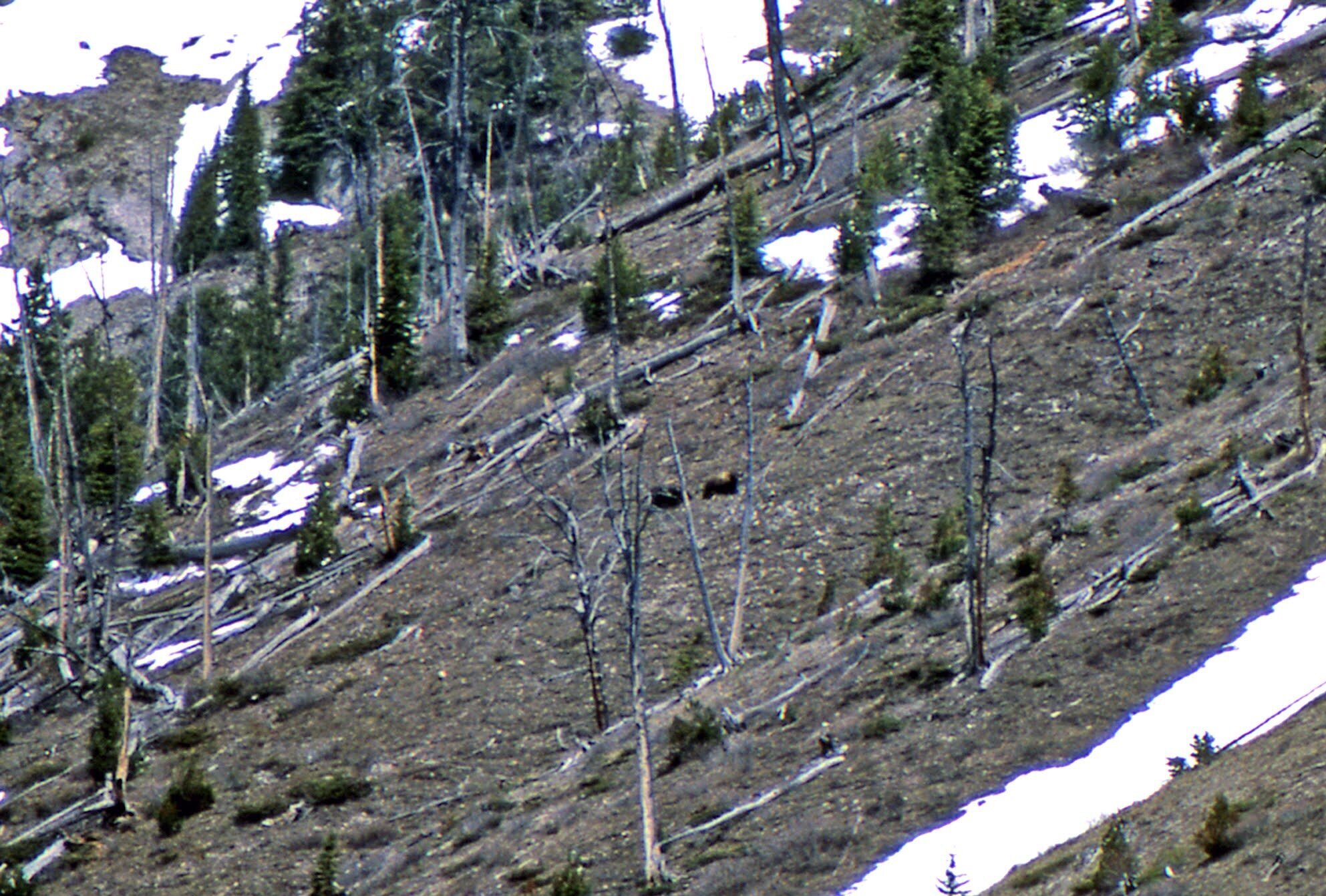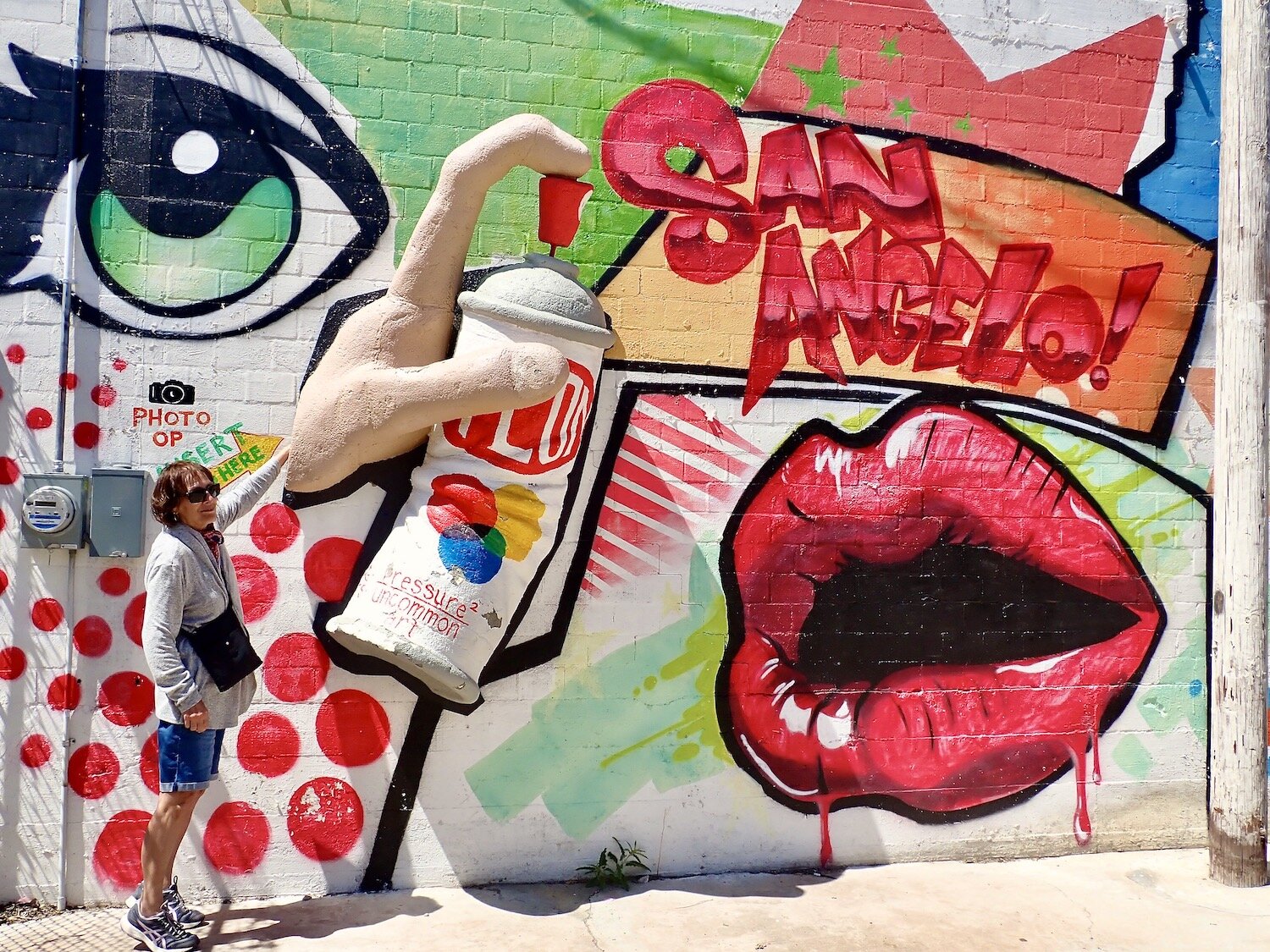The Disagreement
By: Bud Journey
I was sitting with my back to a tree in the remote reaches of British Columbia's East Kootenay Mountains. I was with my friend, Bob Fontana, and we were watching a couple of three‑year‑old grizzly cubs in a large opening on the sunny, south‑facing hillside across the canyon from us. They were feeding on the remains of a mountain goat killed in an avalanche the previous winter.
The cubs seemed nervous: they ate hurriedly and frequently interrupted their feeding to look across the hillside toward a large forested area. Suddenly, they took one more quick glance toward the trees, then sprinted frantically in the opposite direction, disappearing within seconds over a nearby ridge. One word aptly described their actions: terror.
Glassing a wilderness mountain in southeastern B.C.
We trained our binoculars in the direction from which the cubs had fled and picked up movement at the forest's edge. As we watched, a mature male grizzly emerged from the trees. The big, dark‑colored boar swaggered across the mountainside with the haughty belligerence of the king who knew he could quash any challenge that might arise ‑‑ and he was hoping one would arise.
"There's your classic example of an alpha male," said Bob. "They don't come much bigger than that one. It will be interesting to see what happens if he crosses paths with that pair we saw earlier.”
Bob and I were resting under the cover of a lodgepole pine thicket along the floor of a canyon in British Columbia's Elk Valley, an expansive wilderness in the southeastern part of the province. The bears were high on the opposite mountainside.
As we sat in that remote valley watching the big, dark grizzly across the canyon, he abruptly stopped at the precise spot where we had seen a breeding pair disappear into some trees only moments before. It seemed like the hillside was alive with grizzly bears. The black sniffed the ground, tested the air with his nose, then proceeded on in the direction he had been going, seemingly dismissing the scent of the other two bears ‑‑ but he wasn't ignoring them. He was acknowledging their presence in his own way. Moving on across the hill, the black boar stopped at a stunted, gnarly tree. Reaching as high as possible, he raked the tree on both sides with his claws. Next, he approached a 10‑foot‑high fir sapling and pushed it over, parallel to the ground, rubbing his belly along the entire length of the tree. Then, he slowly circled back in the direction from which he had come, stopping at various points along the way to scrape a tree, rub his scent around, and generally beat up on the surrounding vegetation.
When he was done with the ritualized macho act, he moved quickly to the scent trail of the breeding pair that had recently passed by that spot. He strode briskly up the hill, moving boldly into the trees at the exact location the pair had disappeared earlier.
Bob said , "Things could get a little tense up there.”
Conceding Bob’s conjecture, I raised my binoculars and studied the hillside. Briefly, I thought I glimpsed the oddly incongruous spectacle of a large fur‑ball rolling down the hill.
I heard Bob say, "What the ...?" Then, he said, "You know what I think I just saw?"
"Sure," I said. "You saw a giant fur‑ball rolling down the mountain. By the way, what kind of an animal travels that way?"
Without taking his eyes off the hillside, Bob answered, "I'm not sure, but I think you might call it 'Two pissed off grizzly bears!'"
And so it was.
The bears walked in a parallel march, maintaining a fixed distance between them.
As we watched, the fur‑ball rolled out of the trees onto the open hillside, and we could pick out the odd leg, paw, or scoop‑faced head protruding from the two‑toned, gray/black mass of tumbling frenzy. Finally, the ball stopped rolling, and the amorphous blob unfurled into two distinct forms. An immense black boar and an equally imposing cinnamon‑colored boar faced off, each measuring his opponent for an advantage.
After the briefest respite, they slammed together again, cuffing and biting in a no‑holds‑barred brawl. Then, they rose up on hind legs, gripping each other with massive forearms and four‑inch claws, furiously gnawing chunks of fur and flesh from the neck/shoulder area of their opponents.
We were awe‑struck by the desperate battle for dominance, and it wasn't necessary for either of us to voice the obvious: we were experiencing a raw scene seldom witnessed by humans in the wild, one which would not likely come our way again in this lifetime.
As we watched, the bears smashed together, and again became a two‑toned homogeneous mass rolling down the hill. Finally, about two hundred yards from where the fighting bears first emerged from cover, they came to a halt again and squared off on all fours.
For the first time, we could see that the cinnamon bear was, indeed, an equal of the big black. It wasn't a mismatch after all.
After a brief pause, the bears resumed the war and began tumbling down the hill again. They struggled another hundred yards, flattening all vegetation in their way, finally coming to a halt in an exhausted, nose‑to‑nose impasse. The war of wills continued for several minutes until the bears finally moved again ‑‑ this time across the hill. They walked in a parallel march, maintaining a fixed distance between them, feigning disinterest. After traveling thus for about fifty yards, the cinnamon bear peeled off and moved back uphill toward the sow. The black bear continued on around the hill, exiting with as much dignity as possible and throwing an occasional glare back over the shoulder at his erstwhile antagonist.
The black bear continued on around the hill, exiting with as much dignity as possible.
The fight was over, and the swaggering black had lost.
My eye caught Bob's, but neither of us spoke. We both knew words could add nothing to the ultimate example of raw nature we had just been privileged to witness. Glancing one more time toward that wildest of battle arenas on the far hillside, we turned away and headed back to camp.
Have you done something interesting outdoors? Join Global Outdoors and write a review to tell everyone about it! We’re building the home for trusted reviews of outdoor experiences, outfitters, and guides. Help us out and you’ll be entered to win free trips!





